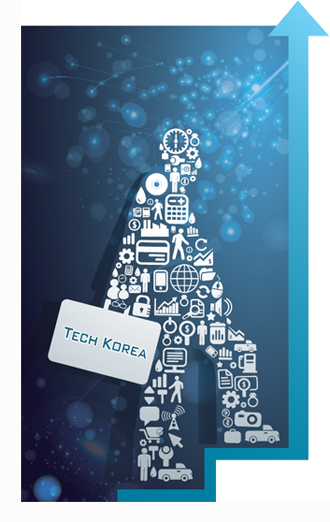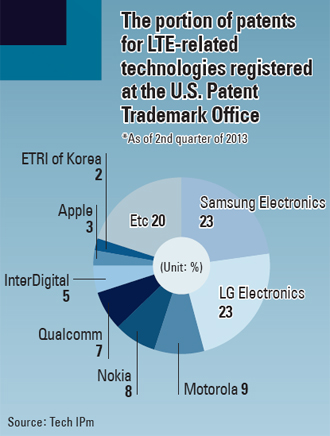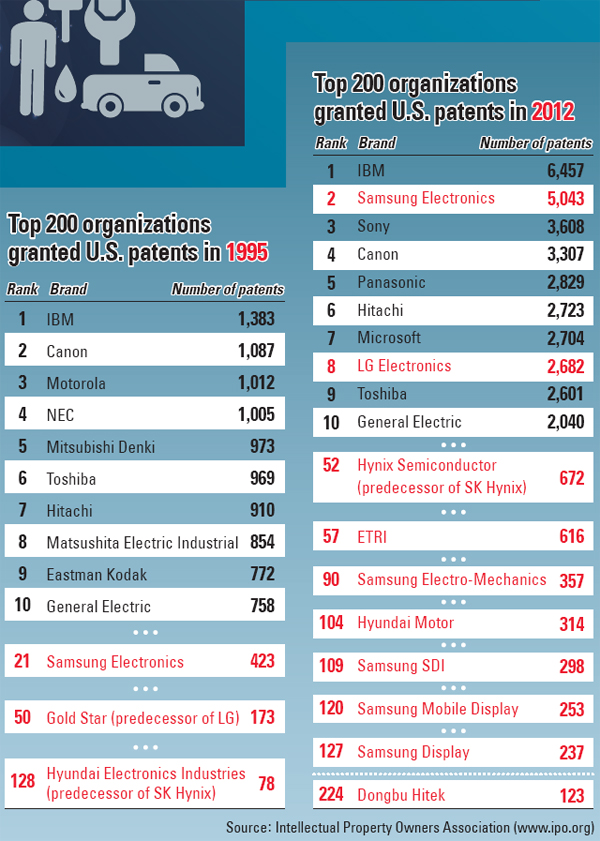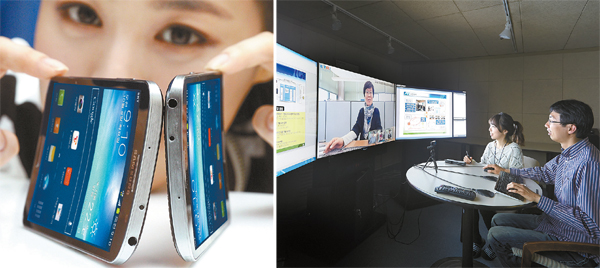Korea’s high-tech miracle comes of age

Most state initiatives at the time - except those to augment the defense against North Korea - were less than 1 billion won, so the institute researchers in charge of the pricey project had to sign a resolution.
“We will do our best to develop TDX, and if we fail, we will brace for any punishment,” read the document, still kept at the Daejeon-based institute.
Partly inspired by ambition to succeed, but possibly driven by fear under the military regime of President Chun Doo Hwan, the efforts bore fruit, making Korea the 10th country to develop the system.
“Few believed a nation that lacked experience with large R&D projects could succeed in developing a technology possessed by only a handful of advanced countries,” says Chong Kil-ho, director of ETRI, speaking of the system that allowed calls to be made simultaneously. “We got a lot of confidence from it.”
Building on that confidence, the institute went on to develop several other state-of-the-art technologies, including code division multiple access, which later became a standard of global wireless telecommunication. The institute was the first in the world to develop it and received 350 billion won in royalties from Qualcomm over several years.
That was followed by being the first in the world to develop long-term evolution, a wireless telecommunication protocol, quickly gaining recognition as a global standard for high-speed data transmission.
Korea, whose economic emergence was largely based on copied or borrowed technologies, now finds itself at the forefront of high-tech development. The change in status is felt most in the information and telecommunications sector, where Korea ranks as an indisputable global leader with Samsung and LG churning out innovative products.
Curved smartphones, which the two companies unveiled last month, are seen as hastening the advent of an era of wearable computers. Apple is reported to be planning to roll out its own curved smartphone next year.

Hyosung, the nation’s leading textile manufacturer, announced last month it has become the world’s first company to mass produce new high-performance polymeric material called polyketone. The development, at the cost of 50 billion won over 10 years, has earned 27 overseas patents.
The global engineering plastics market amounted to 60 trillion won last year and is growing by an average of 5 percent a year. With polyketone, Hyosung aims for 30 percent of the market.
Last year, Kolon Glotech, another textile company, was the first to develop a technology to dye polypropylene fiber fabrics and is seeking to market it under the product label “Purelon.” Polypropylene is a thermoplastic polymer durable enough for a wide variety of industrial applications and has so far been used primarily in disposable diapers and non-woven fabrics because it couldn’t be dyed. Kolon Glotech plans to apply the technology to the production of outdoor wear, swimsuits and other clothing.
LG Chem developed FPR (film-type patterned retarder), an optical film applied to 3-D televisions, in 2010. Previously, the optical film market was led by Japanese companies Nitto Denko and Sumitomo. Now, LG Chem has 85 percent of the market.
It is not the only successful innovation for LG Chem. In the 1990s, LG Chem developed metallocene, a metal catalyst that was considered a next-generation chemical material at the time for its versatility. LG used metallocene in the production of high-value-added polyolefin products, bringing the company 400 billion won in annual revenue.
Posco developed TWIP (twinning-induced plasticity) steel, initiating mass production last December. Mixed with manganese and aluminum, TWIP steel is three to four times as strong as general steel and has a high degree of ductility. It can reduce the weight of a car by as much as 28 percent.

Materials are raw resources that are parts of components, such as the glass in a mobile phone display. Together with the final products, materials and components are a bellwether of the level of technologies a country possesses in its manufacturing sector.
In 2001, Korea was the world’s 10th-largest exporter of components and materials; by 2010, it was fifth. The country’s long-standing dependence on imports from Japan was 21.5 percent in the third quarter, compared with 28 percent in 2003.
“Imports of materials and components from Japan are getting smaller, and we may be seeing the outcome of efforts we have made over the years,” said an Industry Ministry official.
Some credit goes to the steady, growing investment in research and development by domestic companies. According to the Ministry of Science, ICT and Future Planning, the amount manufacturers spent on R&D activities grew from 21.3 trillion won in 2007 to 33.4 trillion won in 2011, a whopping 56.6 percent.
The government has assisted by transferring technologies it developed at state institutes to the private sector. The ETRI, which has held the most U.S. patents among the public research institutes in the world for two consecutive years, transferred DRAM semiconductor chip technology to Samsung Electronics and Hyundai Electronics Industries, the predecessor of SK Hynix, helping the two companies become the world’s leading chip makers.
In 2011, Korea was second in R&D investment in the percentage of gross domestic product at 4.03 percent, behind Israel (4.38 percent). It invested 49.89 trillion won.

More plans to equip Korea with winning technologies are being hatched under the administration of President Park Geun-hye, the first Korean president with an engineering background, who has been pushing for a creative economy.
“The key to the creative economy is the nation’s technology competitiveness, and in order to raise competitiveness, we need to analyze the current technology trade situation and, based on that, realign into the structures of the advanced countries,” said Choi Mun-kee, minister of science, ICT and future planning, during a September symposium. “The government is working on supportive policies to help it.”
The focus likely will be on ICT, which requires the most advanced technologies, and Korea is gaining a more solid footing in the area. According to Tech IPm, a U.S.-based research and consulting company, Korea held nearly half of U.S. patents related to LTE technologies in the second quarter of this year. Samsung Electronics and LG Electronics each held 23 percent, while the ETRI held 2 percent. ETRI says its 80 LTE-related patents each has the potential to earn $10 million in royalties.

Samsung Electronics’ Galaxy Round (left) along with the LG Electronics G Flex are leading the way to wearable devices. Researchers work at ETRI (right), which pioneered Korea’s tech transformation. Provided by the company, institute
Despite technological breakthroughs, however, Korea is heavily dependent on key technologies that can constrain its export of ICT intellectual property. Korea posted a $4.95 billion intellectual property trade deficit last year, compared to $2.96 billion a year earlier, according to the Bank of Korea. Conversely, the United States posted a $84.2 billion surplus in 2011.
Korea’s technology trade deficit has grown over the past several years, reaching $5.9 billion in 2011, the largest among OECD countries.
“We are still weak at converting the investment into real economic value,” said Ha Tae-Jeong, head of the industrial innovation research team of the Science and Technology Policy Institute. “Many of the patents Korea is winning these days rarely bring in cash.”
Ha believes the value of patents held by the Korean government or Korean companies could rise by such efforts as packaging patented technologies. “What we need to research now,” he said, “is maybe how to translate the technologies on our hands into value-added businesses.”
BY MOON GWANG-LIP [joe@joongang.co.kr]










with the Korea JoongAng Daily
To write comments, please log in to one of the accounts.
Standards Board Policy (0/250자)